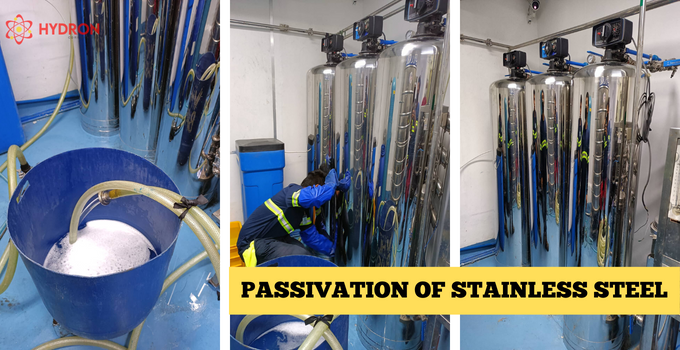How Passivation Protects Stainless Steel
Passivation is an important process that removes any free iron from the surface of stainless steel. This is often done in newly manufactured stainless steel equipment to create a passive layer as a way to protect it. Most of the time, nitric acid is used to passivate stainless steel. Over time, a passive layer forms on the surface of the stainless steel when chromium interacts with oxygen in the air. This, in turn, produces chromium oxide. Once the stainless steel is “passive” or unreactive, the equipment can now be used in food, dairy, cosmetics, beverage, and pharmacy processing.
Passivating Stainless Steel
Chemical passivation is a three-step process that involves the following:
- Cleaning the surface of all minerals, grease, and organic oils.
There are specialty cleaners that can be used to remove all organic oils, grease, and minerals from the surface. Standard alkaline cleaning products are inefficient for silicone, mineral oils, and greases. Take note that de-greasing should be done correctly. If any grease spot remains, it will affect the passivating process. A camphor test can be used to determine if degreasing was done successfully.
- Remove any free iron that remains on the surface using acid.
Removing free iron from the surface before oxidation is an important step. If it is not done well, a localized site where corrosion can occur will happen. Acid is a helpful solution since it can remove free iron without compromising the integrity of the surface.
- Using an oxidizer to create a passive layer on the surface.
The last step is using an oxidizer to force the chromium metal into its oxide form. This last step creates the passive layer.
What are the Primary and Alternative Passivation Methods to Use?
The primary method used in passivating stainless steel is using nitric acid. This strong mineral acid removes iron compounds and trace metals from the stainless steel’s surface. Aside from that, nitric acid is also a strong oxidizer, which can automatically activate the chromium oxide layer. However, although this acid is quite strong, high temperatures and longer times are still needed to passivate the stainless steel successfully.
Meanwhile, citric acid is an alternative to nitric acid when passivating stainless steel. It effectively removes free iron and other compounds from stainless steel. Aside from that, it is also safer to use compared to nitric acid. It is also biodegradable and even used as a food ingredient. However, citric acid is not an oxidizer. This means it will not be able to continue with the third step, oxidation. It will have to rely on natural air oxidation to achieve passivity.
When Should You Passivate Your Equipment?
There is no specific rule on when you should passivate your equipment. However, this process is often done on newly manufactured or refurbished stainless steel equipment. Passivating stainless steel will depend on how the equipment is used and if the surface has been damaged. Passivating stainless steel once every year is possible as part of their maintenance. Others will require it to be done several times, especially when the surface is exposed to high chloride levels.
Schedule your passivation service today and learn more about how the proper passivation process impacts your industry. Contact us to explore customized industrial cleaning solutions tailored to your business needs. Call us at +63 920 911 1431 | +63 917 100 7221

